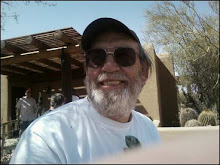I have been a member of Ancestry since 2003 and I have used their resources to find out about me genealogy off and on since then. In 2014, I took their dna test. Shortly thereafter, I persuaded my aunt, on my mother's side, to take the test. After that, I persuaded my wife, an aunt on her mother's side and an uncle on her father's side to take the test. Finally, I got my brother-in-law to test.
I now have 6 tests to use for reaching back literally centuries.
I joined GEDmatch and submitted all of the test results I received from Ancestry for insertion into the GEDmatch database, GEDmatch has a number of utility programs to extract and display match information. Each of the samples I submitted have 8000 to 10000 matches. Since many individuals have multiple matches, these numbers do not represent the number of people matched.
I submitted my Ancestry dna information to FTDNA and there I have about 2000 matches with individuals, most with multiple segment matches.
I am a retired software engineer. When I assessed how much information that I had at my disposal, I concluded that computer analysis would be more useful than going through each match by hand. I have 11 different programs that provide that analysis.
I have some programs that analyze the data I collect from GEDmatch. I use the Tier 1 utilities for segment matching and triangulation. They are the only ones that give specific chromosome and segment information related to an individual. Using two utility programs, data from the GEDmatch output is extracted and placed in a database.
I also wrote a program to analyze data extracted from the FTDNA information. So far, this information is not integrated into the database containing GEDmatch data. It might be at a later date. FTDNA dna data info from any FTDNA user can be inserted into the GEDmatch website database.
Up until recently, I have searched AncestryDNA visually for matches. This is a very tedious process. I discovered another website, DNAGedcom, had a useful utility, DNAGedcom Client. It could be used to log into Ancestry and download all matches above 6 cM (centiMorgans) and all trees that a match was associated with. Login access to both Ancestry and DNAGedcom is required to use this utility. When I used this on my own tree, I found that I had around 25,000 dna matches in Ancestry and over one million lines of matching tree information. Clearly, I needed more programs.
I wrote a program that analyzes the downloaded Ancestry data and produces a list of the urls to all trees that have matching people in my tree and have matching dna.
Now I have an arsenal of analysis tools. I expect the arsenal to grow as I learn more about genetic genealogy.




